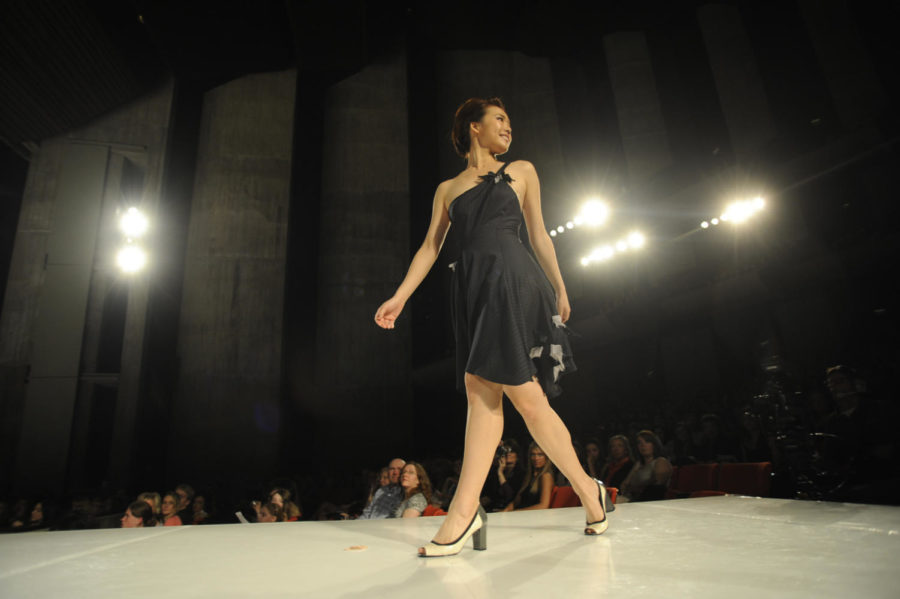The runway hits Ames
April 10, 2011
The 29th annual ISU Fashion Show took place Saturday blowing the minds of audience members.
When the first fashion show hit Ames in 1982, there were only 52 attendees. On Saturday, Stephens Auditorium was practically filled.
Danielle Powers, one of the fashion show producers and senior in apparel merchandising design and production, was pleased with the ticket sales.
“I think people come to expect the show, and it has grown so much. I am fairly sure we sold out this year.”
The show displayed 103 looks. Apparel shown ranged anywhere from bright, spunky outfits for little girls to romantic bridal wear to tough fur-lined military jackets for men.
At the end of the show, 22 awards were given out ranging from menswear to wearable art/experimental. Fashion industry professionals judged the looks, Matthew Christopher being one of them.
Christopher, an ISU alumnus who created his own bridal label at age 26, left Stephens impressed by all the students work.
“I think the show was phenomenal. I’m really proud of the students. The program has grown so much from when I was in it in 1997.”
Every aspect of the fashion show was created and planned by ISU students. The show’s planning is done in a three-credit class offered at the university.
Natalie Gendle, The Fashion Show faculty adviser, stated what made the 2011 show different from the past was the sustainability theme.
“The students come up with great things every year,” she said.
The set of The Fashion Show was made up of all recyclable materials.
“Everything was left in their original form, everything can be recycled,” Gendle said.
Ian Laughead, a member of the set tech committee and a sophomore in apparel merchandising design and production offered insight to the set theme. “We wanted to show the rebirth of clothes.”
The first half of the show had a plastic bag wall as the backdrop, which was used to show ” the first stage of consumerism,” Laughead said. The second half had a backdrop of colorful tees, which was used to display “a wall of beauty. “
“We wanted to make T-shirts more than just what they are,” Laughead continued.
What was especially impressive about the set was the mechanics behind it. In the beginning of the show the set evolved full-scale by a wall raising from the stage. During the second half of the show a chandelier made of plastic bottles dropped from the ceiling.
Stefan Tauber, a graduate student in apparel educational studies and hospitality management, was the DJ for the entire show. Tauber got his DJ experience growing up in Berlin where he played in clubs.
“I prepared for about one-and-a-half to two months selecting music. I got a feeling of what music not to play. You need a walking, engaging beat with strong vocals.”
Most of the music Tauber selected was European.
The success of the show came from hours of rehearsal and planning. Both Powers and Laughead said they thought about moving their beds to Stephens because they had been spending more time there this past week than their homes.
Winning garments will be on display at the Mary Alice Gallery from April 27 through August 26.

















